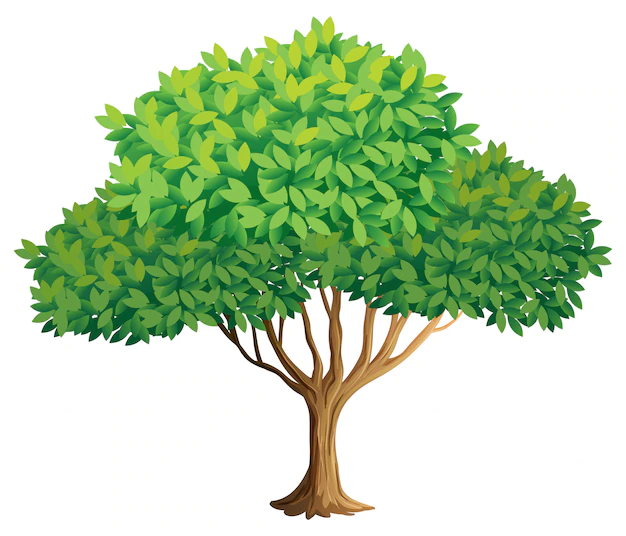Tree Essay for Students and Children

There is no denying that trees are essential to our planet. They provide us with oxygen, help us regulate our climate, and store a vast amount of carbon dioxide. In addition to their ecological importance, trees are beautiful and can add character and elegance to any landscape.
Importance of Trees
Trees are an essential part of our environment and economy. They provide us with oxygen, shade, and fibre for textiles, paper products, construction materials, etc. Trees play a vital role in climate change mitigation by absorbing carbon dioxide from the air. Additionally, trees help to control erosion, provide wildlife habitat, and reduce flooding.
Trees help to improve air quality by absorbing pollutants. They also provide a source of food and water for wildlife, reduce noise pollution, and produce wood products and other materials that are essential for our economy.
Types of trees

There are many different types of trees, including tropical trees, deciduous trees, and coniferous trees. Each kind of tree has unique features that make it special.
Tropical trees are the most common type of tree in the world. They grow in warm climates all over the planet, including in the United States. Tropical trees are usually very tall and have large leaves. Some tropical trees, such as coconut palms, are even used for food.
Deciduous trees are the type seen in most forests. They lose their leaves every year in a shedding process, which happens mainly during the fall and winter months. Deciduous trees can be either tall or short, depending on how long their leaves stay on the tree. Some deciduous trees, such as the oak tree, can live for hundreds of years.
Coniferous trees are a type of tree that is not very common in North America. They are usually found in colder climates, such as northern Europe and Asia. Coniferous trees grow very slowly and have small leaves. Some coniferous trees, such as the pine tree, are used to make lumber.
What are the benefits of trees?

There are many benefits to trees. Foremost among these, trees provide oxygen, an essential part of life. They also help reduce air pollution and play a role in mitigating climate change. Trees are also important sources of food, fibre, and other materials we use every day. In addition, trees provide shade and cooling relief during hot weather, and they are instrumental in preserving biodiversity.
Value of Trees
Trees provide enormous environmental value by sequestering carbon, moderating climate, filtering water and providing habitat for wildlife. They also provide aesthetic value to communities, adding a touch of nature to urban landscapes.
There are many reasons why trees are valuable, but some of the most important include the following:
Trees sequester carbon, which is essential to slow climate change. In the US alone, forests store around 26 billion metric tons of carbon – more than all the cars and trucks in the country combined! Trees also play an essential role in regulating atmospheric temperatures by blocking sunlight or releasing it at certain times of the day.
Trees filter water and help maintain healthy ecosystems. They can absorb up to three times their own weight in water each day and help reduce flooding and erosion. Trees also provide habitats for wildlife, such as birds and butterflies.
Trees add beauty and tranquillity to communities. They can be used to create parks or gardens or planted in streets or other public areas.
Problems with Cutting Down Trees
The number of trees that need to be cut down for development is alarming. The environmental and social problems resulting from deforestation are numerous and complex, but they all have one fundamental root: the destruction of trees.
Deforestation has many consequences. It harms the environment by releasing large amounts of carbon into the atmosphere, destroying rainforests and contributing significantly to climate change. Deforestation also destroys habitats for animals, including endangered species, and disrupts natural cycles such as rainfall, which leads to drought. It also has negative social consequences, such as reducing access to food, health care, clean water and energy for people living in forested areas.
Fortunately, there are ways to prevent deforestation and its attendant problems. One crucial step is to reduce the demand for products made from wood, such as furniture and flooring. Another is to promote sustainable forestry practices that protect the environment and the forests themselves.
How can we save trees?

We can save trees by doing the following:
-using public transportation instead of driving
-using recycling bins
-not cutting down trees unnecessarily
-by planting trees as much as possible.
Conclusion
Trees provide us with food, shelter, and shade; they help to keep the air clean by absorbing carbon dioxide emissions, and they provide a home for various animals, such as squirrels and birds. In short, trees are essential parts of our planet’s ecosystem, and without trees, we cannot imagine life on the planet Earth.
Hey kids, how much did you like Tree Essay for Students and Children? Please share your view in the comment box. Also, please share this story with your friends on social media so they can also enjoy it, and for more such stories, please bookmark storiespub.com.

























Comments are closed.